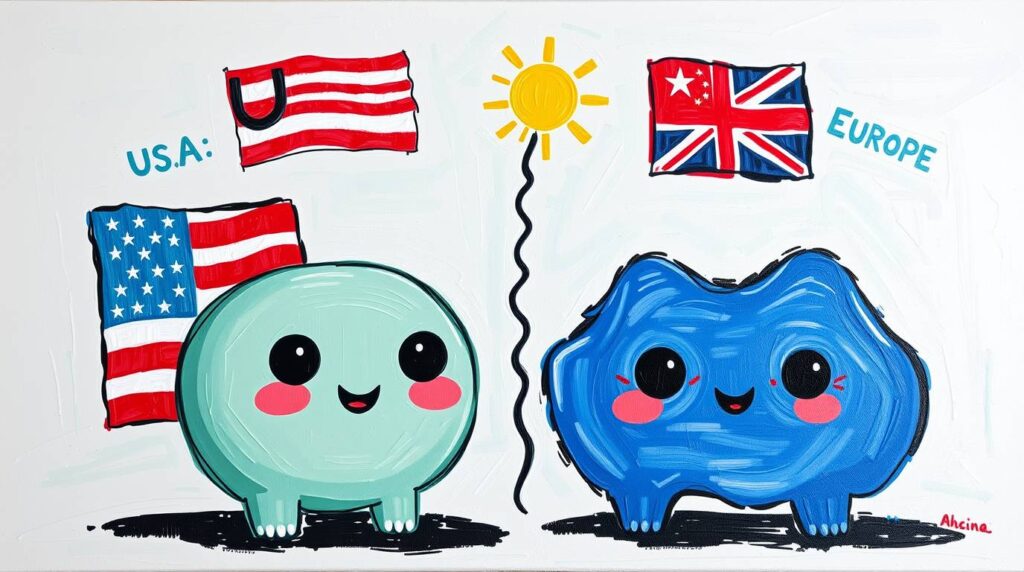What Is the RBA Cash Rate and Why Does It Matter?
The RBA cash rate is the official RBA interest rate set by the Reserve Bank of Australia and serves as the anchor for short-term money markets. It directly influences how much banks charge to lend money to each other, and by extension, how much you pay on mortgages, business loans, and credit cards.
When the RBA adjusts this rate, the decision cascades through the entire financial system, impacting:
- Consumer and business borrowing
- Exchange rates (especially the AUD)
- Investment decisions
- And yes, the Australian stock market (ASX)
What is the current RBA cash rate?
As of the most recent update (9th July 2025), the RBA cash rate sits at 3.85%, following a string of tightening measures aimed at curbing inflation. This level hasn’t been seen since late 2023, and markets are now watching closely for signs of lower rates.
When Is the Next RBA Meeting in Australia?
The next RBA meeting in Australia is scheduled for 11th August 2025, in line with the central bank’s usual first-Tuesday-of-the-month cycle. These meetings are critical events for traders, fund managers, economists, and mortgage holders alike.
During each RBA meeting, the central bank reviews the latest economic indicators, including:
- Inflation figures
- Employment data
- Consumer confidence
- Global interest rate trends (especially from the US Federal Reserve)
Why it matters: The next RBA meeting could be the pivot point that marks a pause in rate hikes, or even the beginning of rate cuts if economic conditions weaken.
Will the RBA Cut Interest Rates in 2025?
This is the big question on everyone’s mind: Will the RBA cut interest rates in 2025?
Economists are divided, but the following trends are increasing the odds of a rate cut in the second half of 2025:
- Inflation appears to be easing, with core CPI falling toward the RBA’s 2–3% target band
- Retail spending and business investment are slowing
- Unemployment is beginning to tick higher in some regions
- Household mortgage stress is rising due to high repayments
A rate cut would be intended to stimulate economic activity, making it easier for households to borrow and spend and for businesses to expand and hire.
But it’s not guaranteed. The RBA has made it clear that it’s data-dependent, and if inflation proves sticky or wage growth accelerates too fast, rate cuts may be delayed.
We recommend clients prepare for both scenarios. Diversification and risk management are key strategies in volatile rate environments.
How Do RBA Interest Rates Affect ASX Stocks?
Whether you trade daily or invest long term, the RBA interest rate directly influences ASX-listed companies, but not all sectors respond the same way.

Here’s a breakdown of how different ASX sectors are impacted:
| Sector | Rate Cut Impact | Rate Hike Impact |
|---|---|---|
| Financials (e.g. CBA, NAB) | Margins may tighten, lending increases | Margins improve, lending may slow |
| Real Estate (e.g. REITs) | Lower borrowing costs, prices rise | Demand slows, prices under pressure |
| Consumer Discretionary (e.g. JB Hi-Fi) | More spending, stock prices rise | Spending falls, earnings fall |
| Tech & Growth Stocks (e.g. WiseTech, Xero) | Valuations rise (lower discount rate) | Valuations fall sharply |
| Utilities & Infrastructure | Minor positive (stable dividends) | Under pressure (compete with higher yields) |
A rate cut typically triggers a rally in rate-sensitive sectors like tech, property, and discretionary stocks. On the other hand, rate hikes tend to benefit defensive sectors and financials in the short term.
Rate Cuts: A Catalyst for Market Optimism
Historically, RBA rate cuts have often triggered rallies in the ASX 200, particularly in:
- Interest rate–sensitive sectors like real estate, consumer discretionary, and technology
- High-dividend stocks, as lower interest rates make equities more attractive than term deposits or bonds
Notable Examples:
- 2008–2009 Global Financial Crisis:
The RBA slashed rates from 7.25% to 3.00% over 8 months. The ASX 200 fell sharply during the panic, but rebounded aggressively in March 2009, coinciding with the bottoming of rates and major stimulus announcements. - 2019–2020 Pre-COVID Rate Cuts:
Ahead of the pandemic, the RBA cut rates three times in 2019. The ASX 200 responded positively, hitting all-time highs by early 2020, until the COVID crash. Markets were buoyed by cheaper capital and growing risk appetite. - 2020 Pandemic Emergency Cuts:
In March 2020, the RBA slashed the cash rate to 0.25%, then to 0.10%. The ASX 200 bottomed out mid-March and then surged for 12+ months, driven by ultra-low rates and fiscal stimulus.
Rate Hikes: A Drag on Valuations and Sentiment
Conversely, rate hikes tend to suppress ASX 200 growth in the short term, as:
- Borrowing costs rise
- Consumer spending slows
- Valuations compress (especially for growth stocks)
Key Instances:
- 2006–2008 Tightening Cycle:
The RBA raised rates steadily to 7.25%. While the ASX 200 kept climbing during the mining boom, volatility increased, and the market crashed during the GFC, exacerbated by high leverage. - 2022–2023 Inflation Fight:
The RBA hiked rates from 0.10% to 4.10% in just over a year. The ASX 200 endured sharp sector rotations:- Tech and growth stocks sold off
- Banks and energy stocks outperformed temporarily
- Property and REITs underperformed due to rising yields
The Cash Rate as a Market Signal
| Rate Direction | Typical ASX 200 Reaction |
|---|---|
| 🟢 Rate Cut | Bullish: Equities rise, growth stocks lead |
| 🔴 Rate Hike | Bearish/Neutral: Volatility, value stocks favored |
While not every rate decision leads to immediate market swings, the trend and tone of RBA policy often sets the backdrop for investor sentiment.
Smart investors don’t just watch the rate, they anticipate the direction and understand which sectors move first.
Why RBA Decisions Drive Market Momentum
To sum up:
- The RBA cash rate is the key benchmark for Australian monetary policy
- The next RBA meeting could mark a crucial turning point for rates
- There’s increasing speculation of an RBA rate cut in 2025, especially if economic growth continues to soften
- Understanding how RBA interest rates affect ASX stocks can help you stay ahead of the curve and build smarter portfolios
The Lag Effect: Why RBA Decisions Today Impact Markets Tomorrow
One of the most misunderstood aspects of monetary policy is the lag effect, the idea that when the RBA raises or cuts the cash rate, the full impact on the economy and financial markets isn’t felt immediately. In fact, economists estimate that monetary policy decisions take 6 to 18 months to fully ripple through the system.
Why Does the Lag Exist?
There are several reasons this delay occurs:
- Delayed Consumer Response
Households don’t instantly adjust their spending habits when interest rates change. Mortgage repayments might rise, but many borrowers are on fixed rates or buffered budgets — delaying the impact on discretionary spending. - Business Planning Cycles
Businesses evaluate new projects, borrowing, and capital spending over quarters — not days. Higher borrowing costs gradually slow down hiring, expansion, and investment decisions. - Data Collection & Reporting Time
It takes time for economic data (like inflation, unemployment, and GDP) to reflect changing behavior. By the time the RBA sees the effect, it’s already old news. - Psychological Anchoring
Investor and consumer expectations are sticky, they don’t shift in sync with policy. Sentiment adjusts over time based on cumulative signals.
Real-World Example: The 2022–2023 Hiking Cycle
When the RBA began aggressively raising interest rates from 0.10% to 4.10% in just over a year, inflation data remained stubbornly high, causing some to question whether hikes were working.
But by late 2023, the lag effect became clear:
- Housing activity declined
- Retail spending softened
- Unemployment ticked up
- Consumer confidence fell to multi-decade lows
These weren’t immediate reactions, they were delayed consequences of rate hikes made many months earlier.
Why This Matters for ASX Investors
The lag effect is crucial for investors because it creates a disconnect between economic headlines and market performance.
- The ASX 200 may rise even as the RBA is still hiking, because smart money is pricing in a pause or future rate cuts
- Conversely, the market may fall after a rate cut if the underlying economic slowdown becomes undeniable
Example: In 2020, the ASX bottomed in March, months before the economy showed any recovery. Why? Because markets anticipated rate cuts, stimulus, and eventual recovery.
How to Invest with the Lag in Mind
- Don’t trade RBA decisions in isolation, focus on the trend and tone
- Position ahead of expected pivots by watching macro indicators (CPI, employment)
- Understand that “bad news” (e.g., a slowdown) can be “good news” for markets if it signals rate cuts are coming
In short: RBA policy is like turning a cargo ship, the wheel moves before the ship responds. Investors who understand the lag can anticipate market rotations instead of reacting to them.
Global Central Bank Synchronization: Why the RBA Doesn’t Act Alone
While the Reserve Bank of Australia (RBA) is an independent monetary authority, its decisions are often influenced, directly or indirectly, by what’s happening across the globe. In an interconnected financial system, central banks don’t operate in a vacuum. Their policies ripple across borders, affecting capital flows, currency values, and investor sentiment.
This is known as central bank synchronization, when major monetary authorities move in tandem (or sometimes diverge) in response to global economic forces.

The Big Players That Influence the RBA Interest Rate
- United States – Federal Reserve (Fed)
The Fed sets the tone for global liquidity. If the Fed hikes aggressively, and the RBA doesn’t follow, the AUD weakens and capital may flow out of Australia, tightening financial conditions regardless of RBA action. - European Central Bank (ECB)
ECB policy affects global credit markets. If the eurozone tightens or loosens policy significantly, it affects global bond yields and investment flows. - People’s Bank of China (PBoC)
Given Australia’s heavy trade exposure to China, Chinese stimulus or tightening (via credit or interest rates) can impact:- Commodity prices (iron ore, coal)
- ASX mining stocks
- AUD strength
Example: The 2022–2023 Global Tightening Cycle
In response to global inflation, nearly all major central banks entered a synchronized rate hiking cycle:
| Central Bank | Starting Rate | Peak Rate (2023) |
|---|---|---|
| US Federal Reserve | 0.25% | 5.50% |
| RBA Interest Rate (Australia) | 0.10% | 4.10% |
| ECB (Europe) | -0.50% | 4.00% |
| Bank of England | 0.10% | 5.25% |
Despite differences in pace and magnitude, the direction was unified: raise rates to fight inflation.
Markets globally priced in:
- Slower growth
- Higher cost of capital
- Compressed equity valuations
- FX volatility (e.g., AUD/USD swings)
Tariffs, Inflation, and the RBA’s Tightrope: When Trade Policy Meets Monetary Policy
While interest rates are the RBA’s primary tool, global trade dynamics, especially tariffs, are critical variables that influence the central bank’s decision-making. In recent years, protectionist trade policies and tariff impositions have created ripple effects through global markets, impacting inflation, currency values, and investor confidence, all of which feed into the RBA’s monetary policy stance.
How Tariffs Drive Inflation in Australia
Tariffs are essentially taxes on imported goods, and they operate like a supply-side shock. When tariffs are imposed, either by Australia’s trading partners or by Australia itself, the cost of goods and materials rises for businesses and consumers.
This imported cost pressure can:
- Increase the Consumer Price Index (CPI), even without strong domestic demand
- Distort market pricing and supply chains
- Cause short-term spikes in inflation unrelated to the business cycle
And here’s the RBA’s challenge: raising RBA interest rates won’t fix supply-driven inflation, but failing to act could undermine inflation expectations, risking long-term price instability.
Trade Wars and the RBA’s Interest Rate Response: Lessons from Recent History
In 2018–2019, the US–China trade war led to waves of new tariffs on goods ranging from steel to electronics. While Australia wasn’t directly targeted, the indirect effects were significant:
- Iron ore and coal prices fluctuated, affecting Australia’s export earnings
- The AUD weakened as global investors reduced risk exposure
- Commodity-linked ASX stocks saw increased volatility
In response, the RBA monitored these developments closely and lowered the cash rate in 2019 to support growth, even though domestic data didn’t yet warrant aggressive easing.
Tariffs, Currency, and the Cash Rate
Tariffs can also impact the AUD, particularly if major partners like China or the US impose restrictions affecting Australian exports. A weaker AUD:
- Makes imports more expensive → feeds into inflation
- Boosts exports → may help GDP growth but worsen trade tensions
- May force the RBA to adjust rates to maintain currency and inflation targets
Why the RBA Watches the Fed Closely
The AUD/USD exchange rate is sensitive to interest rate differentials.

If the US raises rates faster than Australia:
- AUD weakens
- Import prices rise (fueling inflation)
- Outflows from Australian bonds and stocks can occur
Thus, even if domestic conditions don’t justify a hike, the RBA may act to protect financial stability, capital flows, and currency value.
In short: The Fed hikes, and the RBA often follows, or risks financial dislocation.
When Central Banks Diverge: Market Volatility Ensues
Sometimes, banks de-couple, like in early 2024, when the Fed paused rate hikes while other economies still faced high inflation.
Divergence can lead to:
- Currency volatility
- Sudden stock market rotations
- Shifting bond spreads between countries
Astute investors who monitor global central bank meetings, not just the next RBA meeting, are better equipped to navigate macro-driven moves in the ASX, the AUD, and international equities.
What This Means for Australian Investors
- Follow US inflation and Fed commentary as closely as RBA interest rate statements
- Understand how global rate trends affect capital flows into and out of Australia
- Recognize that global liquidity cycles drive big moves in commodities, FX, and the ASX 200
What Should Investors Do Now?
In volatile markets driven by RBA interest rate decisions, investors need:
- Clear insights
- Flexible strategy options
- Access to ASX and global markets
- A broker that puts education and analysis first
Macro Global Markets delivers tutorials, offers, and insights to help retail investors and SMSFs take control of their financial future.



0 Comments